Did you know a tool used by astronauts is now helping Indian students ace exams? Yes, AI tools have infiltrated the academic realm, bringing mind-blowing possibilities. But there’s more beneath the surface that you need to discover.
With AI dramatically changing the way we learn and create, India's education system has never been this exciting. This revolution is not just about passing exams; it's about enhancing creativity and fostering new skills for the digital age.
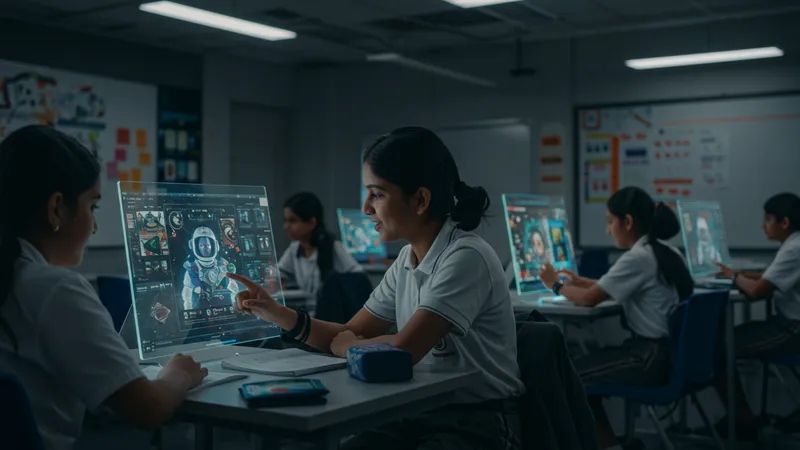
What if I told you that AI is predicting student grades with uncanny accuracy? Yes, algorithms analyzed thousands of student records and made shockingly accurate forecasts. Educational institutions across India are quietly adapting these tools. But that’s not even the wildest part...
Moreover, AI isn’t just making a splash in academia; content creators are tapping into these smart systems to skyrocket their reach. AI-driven content is engaging millions, but it’s not all algorithmic magic. Hidden gems in AI could redefine the creative landscape. The impact goes beyond what’s on the page…
This AI surge is not a fleeting trend but a robust shift in academic and creative methodologies. Are you ready to uncover how these tools are rewriting the future? What happens next shocked even the experts…
AI isn’t just an optional add-on in classrooms anymore; it's becoming a necessity. From virtual classrooms to personalized learning modules, AI offers unprecedented customization in education. Indian educators are cautiously optimistic about these changes, balancing innovation with traditional teaching methods.
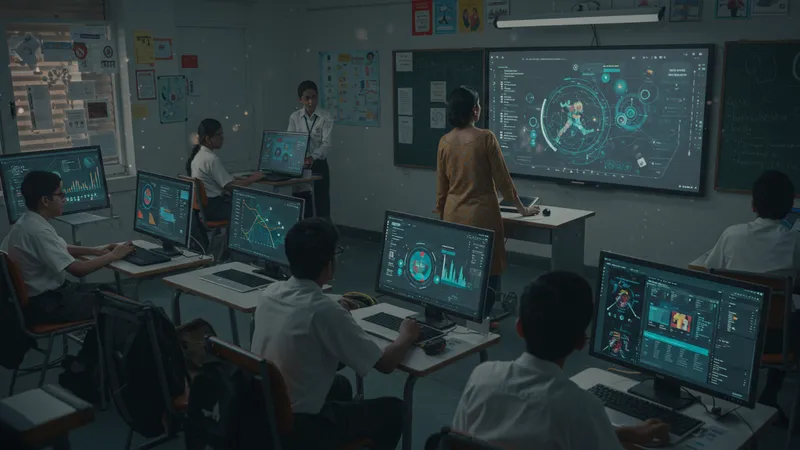
More than just facilitating learning, AI tools personalize experiences. Tools like Coursera adapt courses based on a student’s pace and performance, offering a unique tutoring experience. The insights derived from data also help teachers identify areas where students struggle. But there's a catch—not all schools are prepared for this shift…
Budget constraints and technological infrastructure pose significant barriers. Despite these challenges, some institutions have taken pioneering steps. For instance, certain schools are using AI-driven dashboards to track student performance in real-time, alerting parents immediately if their child falls behind. Curiously, some administrators have resisted, fearing over-reliance on tech.
The dilemma: fostering innovation vs. displacing traditional methods. As these tools get more intuitive, the debate intensifies. While AI marks the path to futuristic classrooms, resistance from educators remains a formidable boulder in this revolutionary path. But what if resistance fuels innovation? There is another layer to this discussion...
Contrary to the belief that AI stifles creativity, it’s actually amplifying it. Hybrid tools are automating mundane tasks, freeing creators to focus on ideating and storytelling. Platforms like Canva have democratized design, enabling students without artistic skills to create visuals that pop. What you read next might change how you see creativity forever.
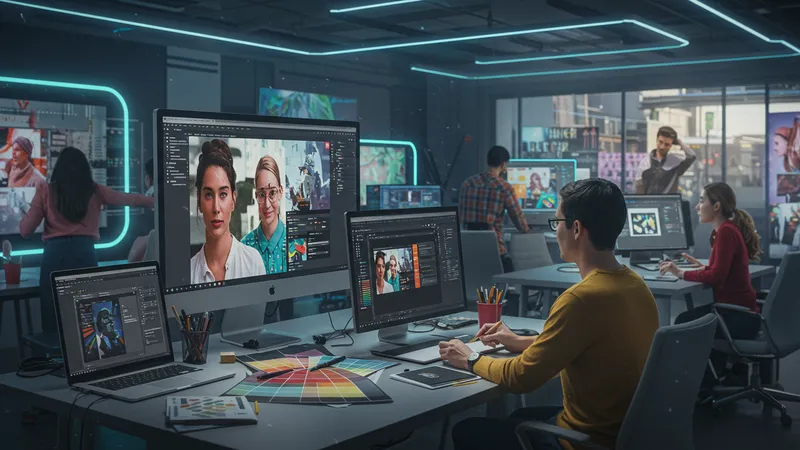
AI's role doesn't stop at easing the process; it's co-creating with humans. Consider tools like Jasper for writing—crafting tailor-made content with the flair you inject. The symbiosis between AI and creators is leading to innovation that transcends conventional art forms. Yet, some purists argue that the essence of creativity is being distilled.
This new paradigm is reshaping the content landscape, with creators leveraging AI analytics to tailor content specifically to audience data. The speed at which AI-fueled content adapts is mind-boggling, aligning with emerging trends. But is this automation stripping the soul from original creation, or merely elevating it?
The debate spirals into philosophical realms—can machines truly think creatively or are they just mimicking patterns? As AI creativity unfolds, these questions become more pressing. However, the truth about human-AI collaboration is more nuanced than it appears. There are hidden dynamics at play that could redefine art itself…
If you thought AI is an elitist tool reserved for tech-savvy students, think again. AI’s accessibility has leveled the academic playing field, offering powerful tools without hefty price tags. Students from various socioeconomic backgrounds can tap into resources once deemed exclusive, leveling the playing field in compelling ways.
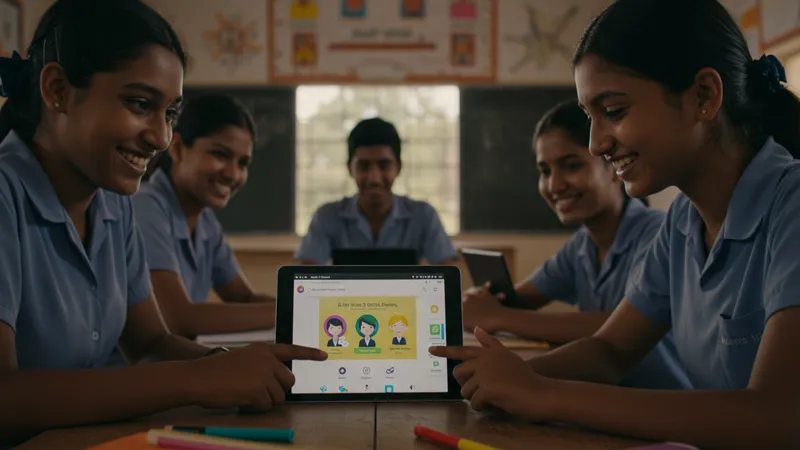
Language is no longer a barrier. Tools like Duolingo are breaking linguistic walls, offering free courses to students across India, enhancing proficiency without costly language tutors. The availability of these tools is reshaping India’s education demographics, but what’s more surprising is how they're affecting rural education…
With smartphones proliferating even in India's remotest areas, AI-driven learning apps are making knowledge accessible everywhere. This tech boom is inspiring a wave of young, tech-proficient learners across rural areas, proving transformative for communities. Accessibility is accelerating learning, but what's lurking around the corner in this tech-driven landscape?
Despite this progress, concerns of digital dependency linger. Are we ushering a generation too reliant on devices? While the benefits are monumental, there's a flipside—one that educators and policymakers are grappling with. But before the final judgment, there's another dimension worth exploring…
While AI text generators like ChatGPT are crafting stunning prose, there's an untapped realm of AI-driven emotional intelligence in content. AI is not only mimicking human writing but also beginning to understand and respond to emotions in text, adding layers of depth previously unseen in machine-generated content.
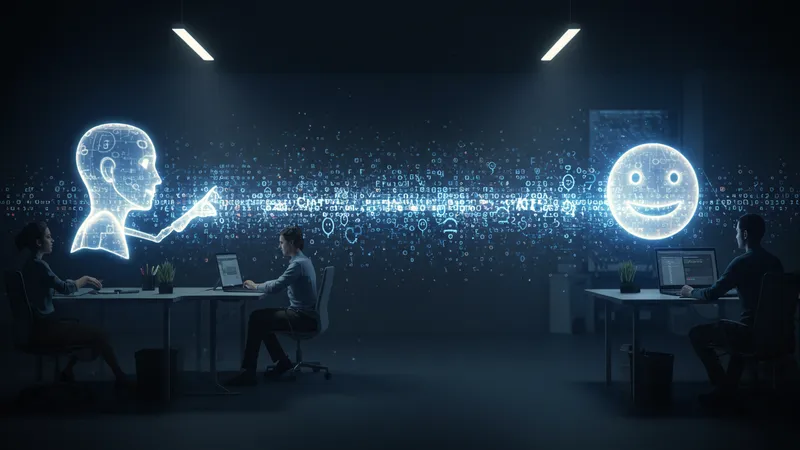
This integration of emotional nuance is helping content resonate on a deeper level, connecting emotionally with audiences. Tools like Copy.ai are leveraging this, enabling creators to produce content that not only informs but also moves. The lines are blurring between human-crafted and AI-generated narratives. But there are deeper implications...
AI’s capability to generate empathetic content offers a new toolset for creators focused on emotional engagement. Yet, this evolution raises philosophical questions about authenticity and emotional manipulation. Is artificial emotion less genuine, or another form of expression?
Even as we ponder this, AI continues to advance, pushing boundaries and redefining what content creation means. The journey is far from over—further advancements could spark unforeseen transformations. There's still another element to uncover in this evolving landscape...
With great power comes great responsibility, and AI's meteoric rise is shadowed by ethical challenges. Data privacy concerns loom large, particularly in educational spheres where massive amounts of student data are being processed. But there’s more at stake than just privacy…
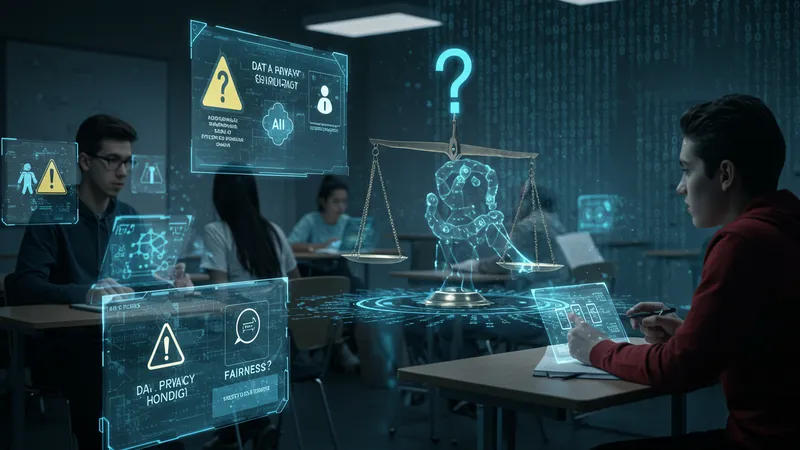
AI’s decision-making in educational settings raises questions of bias and fairness. How do algorithms ensure impartial assessments? Although intended to enhance education, AI systems have inadvertently perpetuated biases, highlighting the pressing need for equitable algorithm training. But the ethical enigma doesn’t stop there...
In content creation, ethical dilemmas around AI-authorship challenge traditional norms. Who credits the work—human or machine? This blurs the lines of intellectual property, sparking debates on originality and credit. It's a legal gray area that demands immediate attention.
As AI continues to embed itself into our lives, the regulation and oversight of these technologies become critical. It’s a tightrope walk—harnessing AI’s potential while safeguarding ethics. The journey towards ethical AI is paved with more questions than answers, revealing intricacies we’re only beginning to unravel…
The landscape is shifting with AI poised to permanently alter how students and creators operate. The transformation is rapid, with AI infusing new life into traditional educational and creative spheres. But this is not just about change—it's about an evolution that demands adaptability.
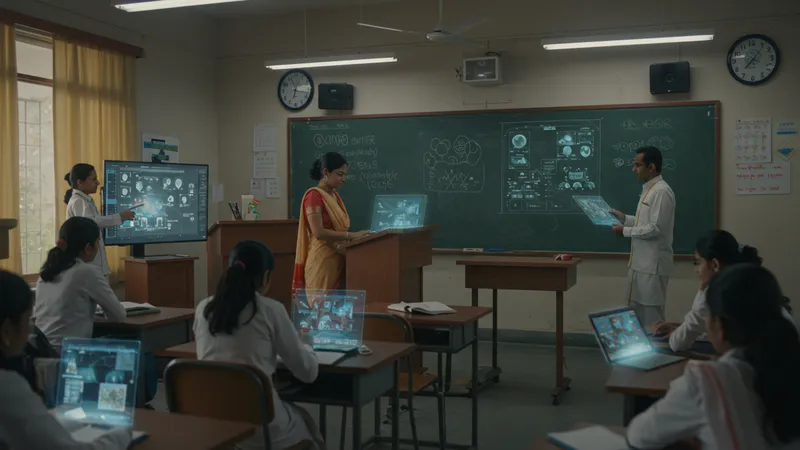
Indian education, traditionally instructor-led, now embraces AI-assisted instruction, allowing for hybrid models that marry tech with pedagogy. This dual approach promises efficiency and engagement, but how students and educators navigate this dual model is crucial.
Similarly, content creators face a revolution where AI complements human talent. The challenge lies in preserving authentic creativity while harnessing AI’s efficiency and reach. Successful adaptation can redefine careers, but the journey requires insight and innovation.
As AI paves the way for unimaginable possibilities, the future demands readiness to embrace change. Whether this transformation will unify or divide is uncertain, but one thing’s clear—a new era is here, compelling stakeholders to rethink their roles. This unfolding story is fraught with promise and caution—but the next chapter is even more thrilling…
Personalized learning powered by AI is revolutionizing education, moving away from "one-size-fits-all" models to tailor-made experiences. This shift addresses the varied learning paces and styles of students, maximizing individual potential. But what happens when technology meets tradition?
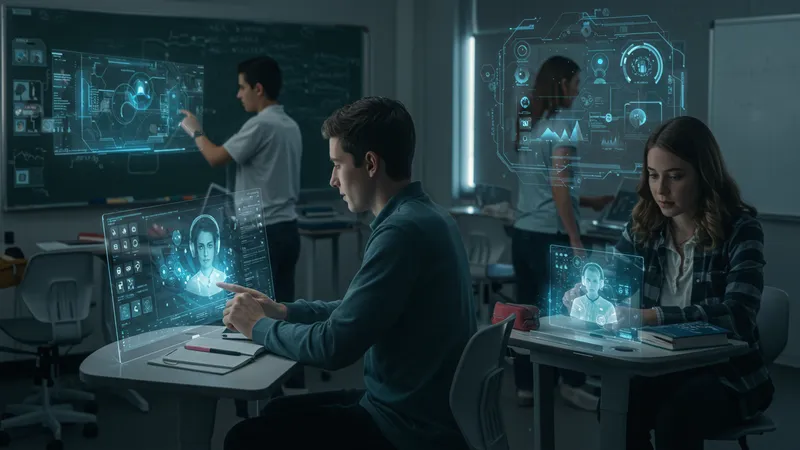
Despite AI’s abilities to customize learning paths, integrating these systems requires substantial overhauls in infrastructure. Resistance from traditionalists who favor established methods adds complexity. Bridging such gaps is an ongoing challenge.
Nevertheless, educators actively collaborating with AI should expect surprising results. Those who embrace AI’s potential for adaptable learning spaces can inspire change at unprecedented levels. But this isn’t just about embracing technology for technology’s sake.
The alliance between educators and AI has the potential to redefine what successful learning looks like. As the lines between traditional and digital education blur, the ultimate aim remains: producing well-rounded, innovative thinkers ready for future challenges. This is just the beginning—the impact will ripple for generations…
AI is not just an enhancement but an upheaval to conventional content creation models. Introducing AI as a collaborator shifts how creators produce and engage audiences, offering beyond-human capacities that transform storytelling. But where does AI fit within our human-centric narratives?
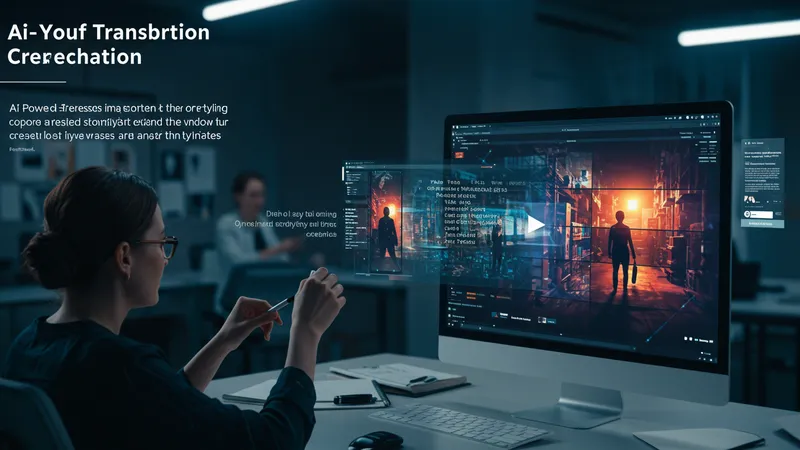
Tools like Lumen5 automatically convert text to video, enabling storytellers to reach multimedia audiences effortlessly. Such capabilities expand traditional storytelling into new media, demanding hybrid skills from upcoming creators. The synergy between text and video blurs distinctions, changing expectations around content.
Importantly, creators must learn to coexist with AI, preserving their unique voice while leveraging technology’s advantages. Combining human creativity with digital prowess not only enhances storytelling but also democratizes creation worldwide.
Ultimately, AI in content production isn’t about replacing humans but alongside aiding them, enhancing capabilities, and broadening reach. This collaboration augurs a future where content is richer, more diverse, and infinitely more dynamic than ever before. But there’s yet another shift awaiting beyond this realization…
AI boasts unexpected applications in examinations, significantly altering assessment dynamics. AI proctoring tools, once the stuff of sci-fi, are now commonplace, detecting irregularities to ensure fairness during exams. But can AI truly supplant human vigilance?
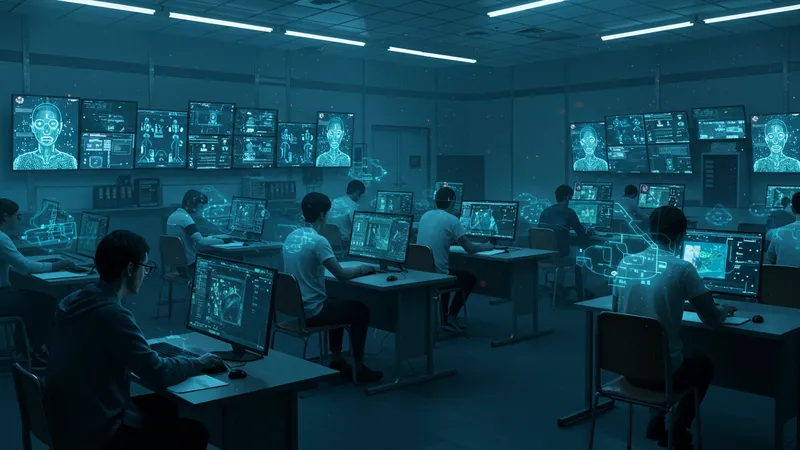
Adoption signals a move towards more transparent evaluation, but ethical concerns arise about privacy and the extent of surveillance. As AI gains a foothold in academia, balancing trust, security, and oversight becomes critical.
Despite controversies, many institutions embrace AI due to its unbiased nature and scalability. Yet, the challenge remains of ensuring AI systems operate equitably, without inadvertently discriminating against students from diverse backgrounds.
Amidst this digital examination era, educators and developers continue to refine algorithms, addressing fairness and privacy challenges. This digital shift demands continued scrutiny, as we ensure AI not alienates, but supports human advancement. There’s yet more potential for AI, waiting to revolutionize further…
In the backdrops of Indian education, skill development is becoming AI-centric, aligning curricula with industry expectations. AI platforms suggest courses, mentoring students into roles that align with evolving job markets. However, how do we safeguard traditional skills?
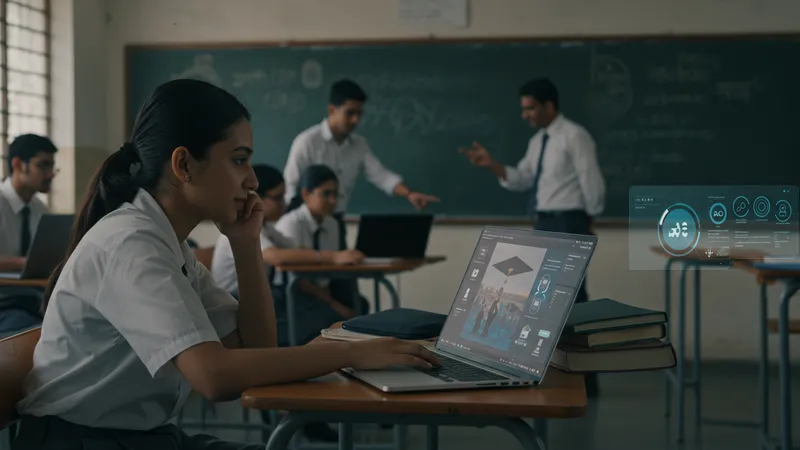
The coupling of AI with vocational training has accelerated digital literacy, but the greater challenge lies in maintaining a balance. As AI lends efficiency to skilling programs, the human elements of learning and interaction remain irreplaceable.
Yet, AI’s role in bridging gaps is invaluable, particularly for underserved communities who may lack access to resources. The opportunity to reskill and upskill via remote platforms is closing divides once thought too wide. But this newfound accessibility presents unique challenges.
Maintaining quality and relevance amidst this tidal wave of tech-driven educational tools calls for adaptive strategies from educational institutions. The journey of integrating AI into skill development necessitates a delicate dance between tradition and technology. And what’s next might fundamentally alter how we educate altogether…
AI tools are redefining collaboration in ways previously unimaginable. There's a synergy forming, with tools like Notion and Slack integrating AI functions to streamline team projects across continents. Yet, AI’s role extends far beyond mere facilitation.
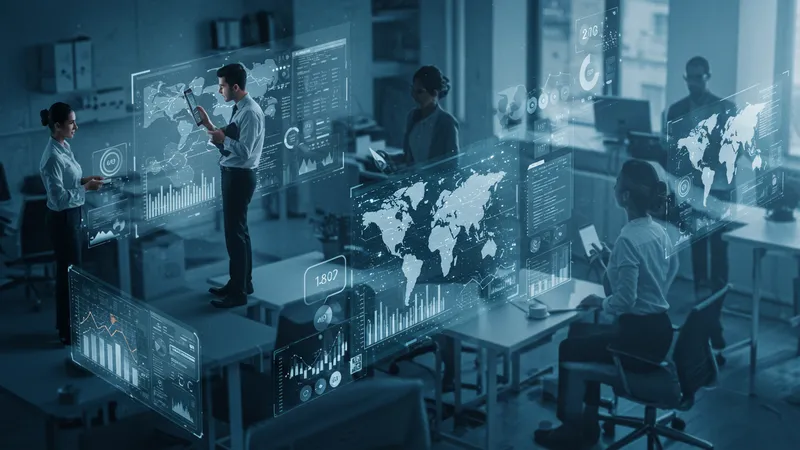
AI collaboratives are enabling virtual group work that is seamless and effective, pushing boundaries of time and space. However, these digital advancements invite new challenges—bridging cultural nuances and ensuring all voices are heard.
For those willing to innovate, AI optimizes workflow efficiencies, taking the hyperconnection of the digital age to new heights. The digital collaboration ecosystem requires adaptation from teams accustomed to traditional methods.
The potential of AI-assisted collaboration lies in creating global networks with deeper connections, fostering innovation that draws from diverse perspectives. This hybrid model of collaboration paves the way for ecosystems never thought possible. But there’s more—AI still holds novel surprises for how we work together…
While AI translates technical tasks into works of art, it's birthing a language of its own in creativity. This unconventional communication reshapes human expression through the veil of algorithms, crafting messages laden with new symbolism. But how authentic can machine-driven language be?
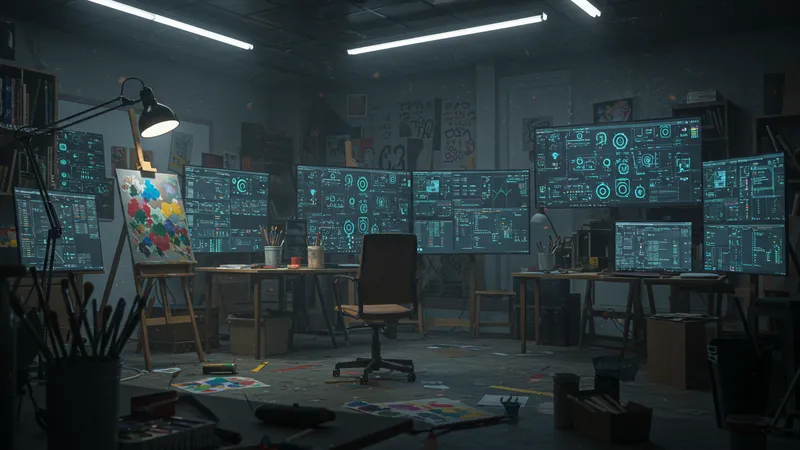
Artists and writers now navigate AI-generated languages, remixing human input with digital insights, forging fresh forms of expression. As they do, concerns about the authenticity and depth of these new forms persist amongst purists.
Despite skeptics, practitioners see AI augmentation as liberating—not confined by human boundaries but tapping into perspectives unimaginable before. By recalibrating what qualifies as art or writing, AI expands the creative landscape.
The resulting collaborations between human thought and AI intelligence pave uncharted territories in artistic expression. Debates endure about emotional resonance, but AI’s place within the pantheon of creativity grows more prominent. There's yet another facet of AI-induced creativity to explore…
AI’s infiltration into visual storytelling isn't just about enhancement—it's disruptive, reshaping the dynamics of how narratives are crafted and consumed. Technologies like DeepArt and Artbreeder synthesize visuals, allowing creators to push past traditional boundaries. But what do these digital manipulations represent?
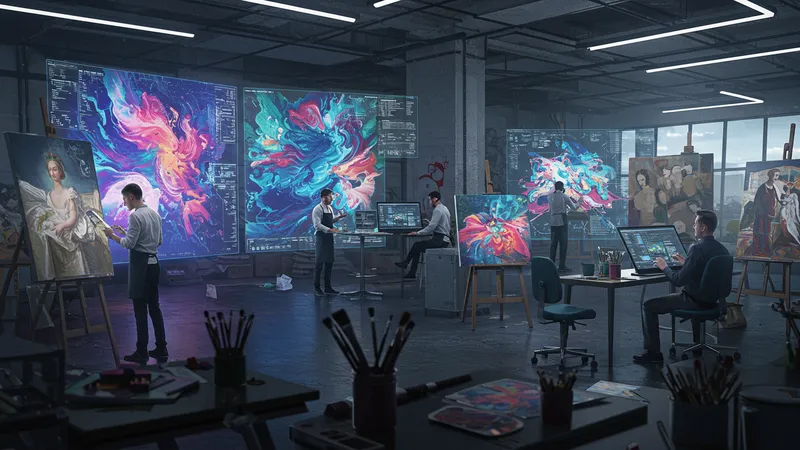
These tools democratize access to high-level creativity, letting amateurs rival seasoned creators. However, purists argue that AI-generated art lacks the ‘touch’ inherent to human masterpieces. But is this new art not art at all?
AI’s capabilities challenge these concepts, weaving narratives that mirror dreams and realities, producing impact and resonance through sheer innovation. Meanwhile, the ease of creating derivative works prompts legal and ethical questions. How does attribution work when the artist is part-machine?
These immersive experiences redefine how stories are told—interactive, hyperreal, and infinitely adaptable. AI doesn’t seek to replace human instinct, but rather augment the visionary potential of visual storytellers. What lies ahead is a frontier melded of ancient storytelling traditions and avant-garde technology…
As AI steers us beyond standard pedagogies and into new frontiers of learning, adaptive methodologies emerge. Personalized experiences scaffolded by machine learning refine how Indian students engage, ensuring each step counts. But can old structures withstand this change?
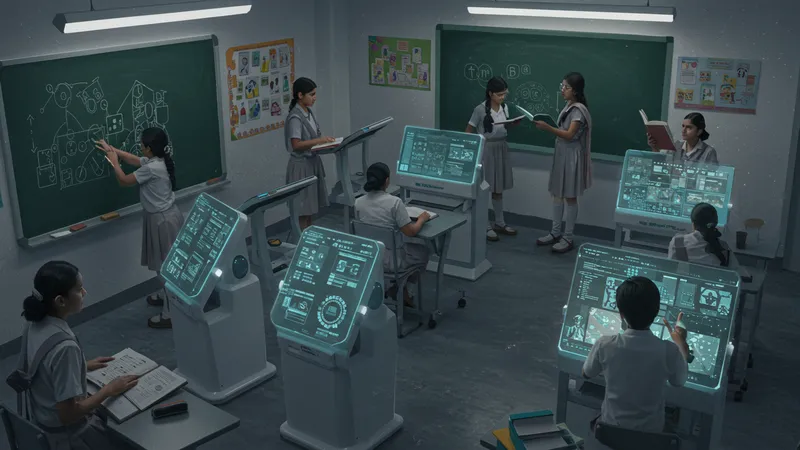
Conventional curriculums struggle against AI’s nuanced learning paths, highlighting a necessary evolution in teaching philosophies. Early adopters report gains in student outcomes, but achieving a holistic shift across India’s educational landscape is fraught with hurdles.
The integration challenges educators to reimagine their roles amidst shifting expectations. As guiding figures, teachers must learn to navigate AI’s influence without losing empathy and insight crucial to guiding young minds.
AI promises to tailor instruction like never before, but the key question remains—how do we balance technological advancement with maintaining a human touch? As we proceed, an essential reckoning looms, shaping not only student success but the future of education itself…
The story of AI tools weaving into the fabric of Indian education and content creation is one of transformation and disruption. As these technologies evolve, so too must we reconsider what progress truly means. Students wielding AI tools today could be tomorrow's leaders, prepared to harness technology’s full potential. Yet, the path isn’t one to tread lightly—ethical, creative, and educational frameworks must adapt alongside to ensure holistic development. Share your thoughts and this journey with peers, and watch this space for what's next in the AI revolution!